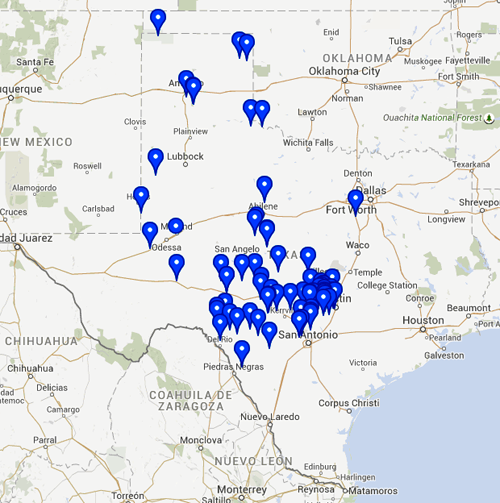by John Jefferson
Well, you might see one or more sometime soon. It’s mating season and if that doesn’t get them to moving, they’re also being seen in many more places than previously. It seems to be a slow, but steady, eastward migration.
Traditionally, porcupines are said to be sparse and confined to west Texas. The Mammals of Texas, by two distinguished wildlife professors at Texas A&M, shows none in Travis County or South Texas. But thanks to the Internet and cell phone cameras, people are reporting and documenting them farther to the east. Documentation is now made easier by a site called iNaturalist. Granted, these are more or less anecdotal reports, but the photos are hard to discredit. Most porcs pictured were pretty well mangled and a roadway center stripe is visible in some images.
A friend called me last week to say he saw three roadkill porcupines on a well-travelled six-mile stretch of roads through popular urban sprawl areas of Travis County, practically within the Austin city limits. Two were on Ranch Road 2222 near Tumbleweed Hill.
About ten years ago, another friend had told me he saw one there. We drove over and saw it, too. I still have a couple of its quills. Since then, reports in Central and South Texas have multiplied. Unfortunately, the ones photographed died violent deaths and don’t make pretty pictures.
I called Clayton Wolf, TPWD’s wildlife director and asked him who his porcupine program leader was. He laughed. Porcupines are protected non-game animals and aren’t hunted. And, their semi-rarity means they don’t warrant a program leader like whitetails and other popular hunted species. Wolf referred me to Jonah Evans, their non-game wildlife mammalogist in Boerne. He was as helpful as he was knowledgeable.
Evans sent me a post he published on a wildlife blog site. It reported on porc sightings from 2012-2015 and showed 73 occurrences, He was quick to point out, however, that sightings aren’t to be confused with porcupine abundance. More than one person could have reported the same critter. These data do show a shift in porcupine distribution, however.
Reading the posted accounts, it’s clear that porcupines exist throughout the Hill Country, up and down I-35 and into north and south Texas. Several posts came from the Houston vicinity and one man in Vidor thinks he saw one.
Porcupines are protected, so don’t shoot one unless it charges and puts you in fear for your life. That’s highly unlikely since they are one of the few animals that turn its backside to any threatening occurrences. That’s the area from which they launch their quills.
Keep your dogs away from them. Dogs are drawn to rear ends to their detriment if encountering a porcupine.
The only porcupine I’ve ever seen in the wild was climbing a tree. Our guide – trying to be helpful – knocked it off the tree. I walked around it for ten minutes trying to photograph it from the front. It kept turning away to keep me in “hindsight”.
JJ





